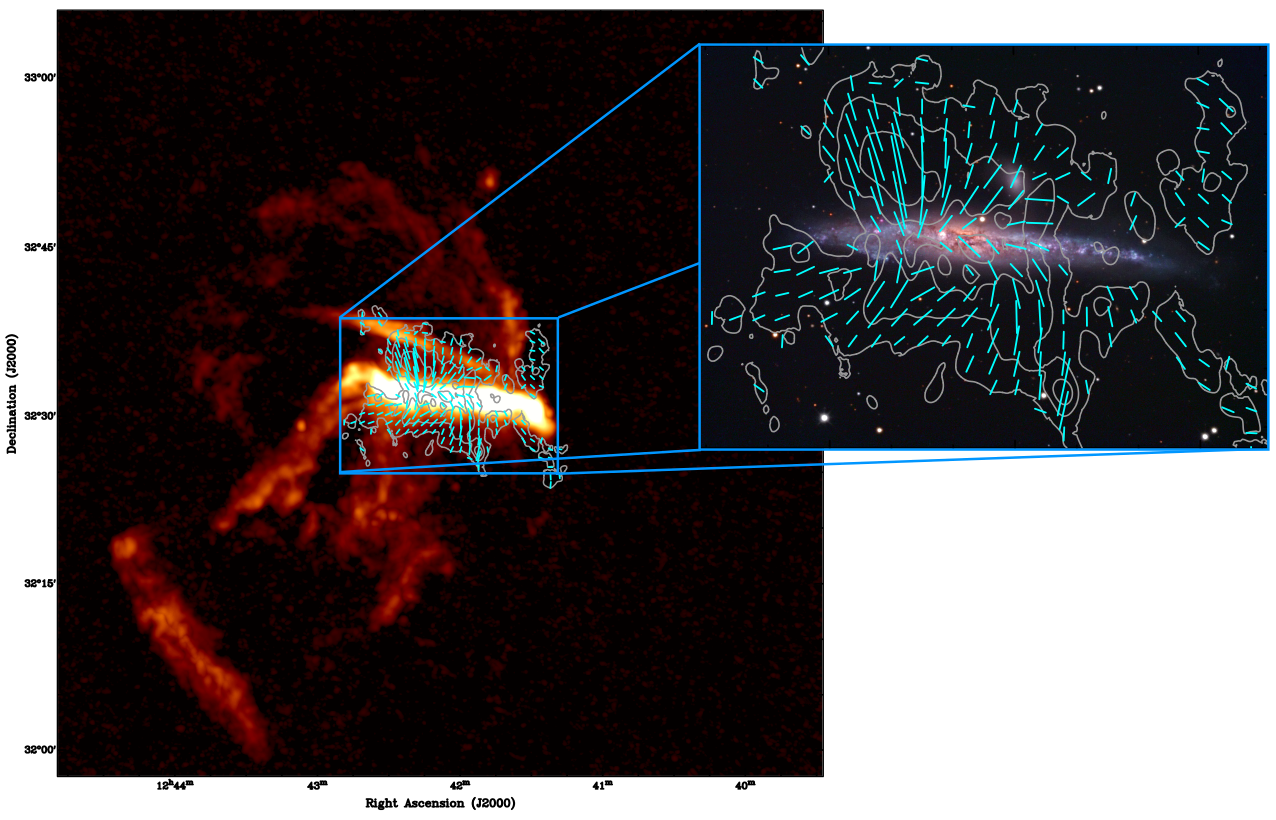| Description: | The continuing evolution of galaxies is linked with their connection to the external environment. Through mergers, interactions, and accretion, the structure and contents of galaxies' interstellar media can be strongly altered. The extraplanar region in spiral galaxies is the interface between the star-forming disk and the environment. The structure and kinematics of the baryonic material in this interface region are vital clues to the relative importance of various processes, such as cold gas accretion and galactic fountains, in determining the history of galaxies. The strength and morphology of the magnetic fields in these regions may also be crucial to understanding the connection to the intergalactic medium. In this talk, I will describe results from two surveys that are shedding light on these issues: the recently completed WSRT Hydrogen Accretion in LOcal GAlaxieS (HALOGAS) Survey, and the WSRT-SINGS Survey. HALOGAS is the first systematic investigation of cold gas accretion in nearby spiral galaxies. It consists of deep (120 hours) WSRT observations of 22 edge-on and moderately-inclined nearby galaxies, and reveals the presence of kinematically lagging extraplanar gas, and counterparts to the Milky Way’s high velocity clouds. The WSRT-SINGS Survey provides high-quality polarimetric data for a partially overlapping galaxy sample (derived from SINGS), and has led to a common model of the magnetic field morphology in spiral galaxies. I will conclude the talk by describing directions for future work in both areas, to be pursued with upcoming telescopes such as LOFAR, as well as the Square Kilometre Array.
In the image, the galaxy NGC 4631 is shown in HI (peak line intensities from the HALOGAS Survey) on the left. The contours show the polarized synchrotron emission observed by the WSRT-SINGS survey, and the vectors show the magnetic field orientations. To the right the same polarization information is shown overlaid on a beautiful optical image courtesy of Robert Gendler. The combination of data sets like these help us to fully explore the extraplanar regions of spiral galaxies. |

